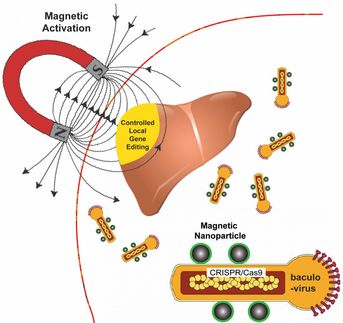Merck awarded its first CRISPR patent by Australian Patent Office
Merck announced that the Australian Patent Office has granted the company patent rights over the use of CRISPR in a genomic integration method for eukaryotic cells.

Merck
The patent is the first that Merck, a leader in genome editing, has received for CRISPR technology. The patent covers chromosomal integration, or cutting of the chromosomal sequence of eukaryotic cells (such as mammalian and plant cells) and insertion of an external or donor DNA sequence into those cells using CRISPR.
“Merck has developed an incredible tool to give scientists the ability to find new treatments and cures for conditions for which there are limited options, including cancer, rare diseases and chronic conditions, such as diabetes,” said Udit Batra, Member of the Merck Executive Board and CEO, Life Science. “This patent decision recognizes our expertise in CRISPR technology—a body of knowledge that we are committed to grow.”
Merck has patent filings for its insertion CRISPR method in Brazil, Canada, China, Europe, India, Israel, Japan, Singapore, South Korea and the U.S. CRISPR genome-editing technology, which allows the precise modification of chromosomes in living cells, is advancing treatment options for some of the toughest medical conditions faced today. CRISPR applications are far-ranging—from identifying genes associated with cancer and rare diseases to reversing mutations that cause blindness.
Merck has a 14-year history in the genome-editing field. It was the first company to offer custom biomolecules for genome editing globally (TargeTron™ RNA-guided group II introns and CompoZr™ zinc finger nucleases), driving adoption of these techniques by researchers all over the world. Merck was also the first company to manufacture arrayed CRISPR libraries covering the entire human genome, accelerating cures for diseases by allowing scientists to explore more questions about root causes.
With Merck’s CRISPR genomic integration technology, scientists can replace a disease-associated mutation with a beneficial or functional sequence, a method important for creation of disease models and gene therapy. Additionally, scientists can use the method to insert transgenes that label endogenous proteins for visual tracking within cells.
In May 2017, Merck announced that it had developed an alternative CRISPR genome-editing method called proxy-CRISPR. Unlike other systems, Merck’s proxy-CRISPR technique can cut previously unreachable cell locations, making CRISPR more efficient, flexible and specific, and giving researchers more experimental options. Merck has filed several patent applications on its proxy-CRISPR technology, and those applications are just the latest of multiple CRISPR patent filings made by the company since 2012.
In addition to basic gene-editing research, Merck supports development of gene- and cell-based therapeutics and manufactures viral vectors. In 2016, Merck launched a genome-editing initiative aimed at advancing research in novel modalities—from genome editing to gene medicine manufacturing— through a dedicated team and enhanced resources, further solidifying the company’s commitment to the field.
Most read news
Organizations
Other news from the department business & finance

Get the life science industry in your inbox
From now on, don't miss a thing: Our newsletter for biotechnology, pharma and life sciences brings you up to date every Tuesday and Thursday. The latest industry news, product highlights and innovations - compact and easy to understand in your inbox. Researched by us so you don't have to.

























































